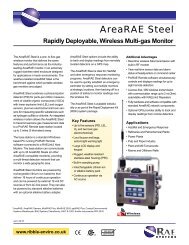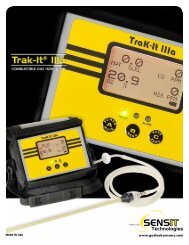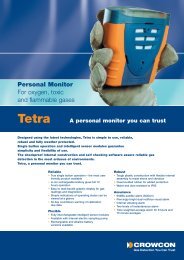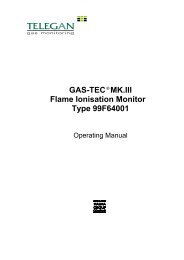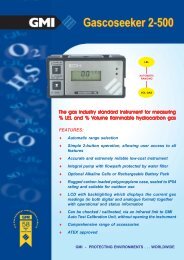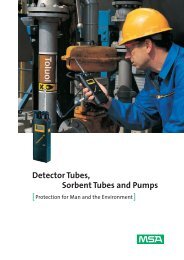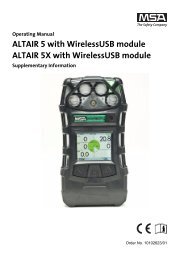E M I S S I O N S M E S S T E C H N I K - Ribble Enviro Ltd
E M I S S I O N S M E S S T E C H N I K - Ribble Enviro Ltd
E M I S S I O N S M E S S T E C H N I K - Ribble Enviro Ltd
- No tags were found...
You also want an ePaper? Increase the reach of your titles
YUMPU automatically turns print PDFs into web optimized ePapers that Google loves.
EiUK USER MANUAL RASI 700<br />
2 Introduction<br />
2.1 The RASI 700<br />
The RASI 700 flue gas analyzer is used for:<br />
• Precise flue gas measurement of almost any type of combustion<br />
• Short control of measurements stacks, kilus, furmances and many other<br />
sites.<br />
It can also be used (when optionals are activated or external equipment<br />
is used) for a number of measurement tasks, such as:<br />
• Flow velocity measurement of flue gas<br />
• Differential measurement of pressure and temperature<br />
• Combustibles detection with external HC sensor<br />
You will find a list of all optionals for this analyzer on our web page<br />
or you can contact EIUK or our local representative.<br />
The RASI 700 Analyzer is available in different versions. This manual<br />
will describe all versions indicating optionals and features not always<br />
available on all versions.<br />
2.2 Important general information (EN 50379) and VDI 4206<br />
This analyzer is not designed to be used for continuous measurements.<br />
Before using the analyzer verify the condition of the various parts of<br />
the analyzer, such as the probe, the ambient air conditions, the condensate<br />
separator, star filter and the connectors for damage and/or blockages.<br />
When starting up the analyzer it will take between 1 – 3 minutes to set<br />
to zero depending on the condition of the sensors and of ambient.<br />
The minimum zeroing time of the analyzer to achieve correct measurement<br />
values can be expected by 1.5 minutes!<br />
Caution: Exposure to acids; aggressive gases such as sulphur; vapours<br />
such as thinners, gasoline, alcohol and paint, etc. can damage, reduce<br />
the life of, or destroy the sensors.<br />
The life of the sensors depends on how they are used, maintained and<br />
treated. Typical average life expectations are: O 2 - 2 years; CO - 2 - 3<br />
years; NO - 3 years, NO2 and SO2 approx. 2 – 3 years.<br />
The use of the analyzer for regulatory purposes is subject to special<br />
regulations (for example a periodical examination of the analyzer).<br />
Please obtain the appropriate regulations from your local responsible<br />
authority.<br />
2.3 Important information about the users/operation manual<br />
The users/operation manual is an important part of this delivery. It will<br />
explain how to use this analyzer properly and sets forth safety and environmentally<br />
friendly procedues.<br />
It is the responsibility of all users to read and familiarize themselves<br />
with this manual, paying particular attention to the safety instructions.<br />
9



